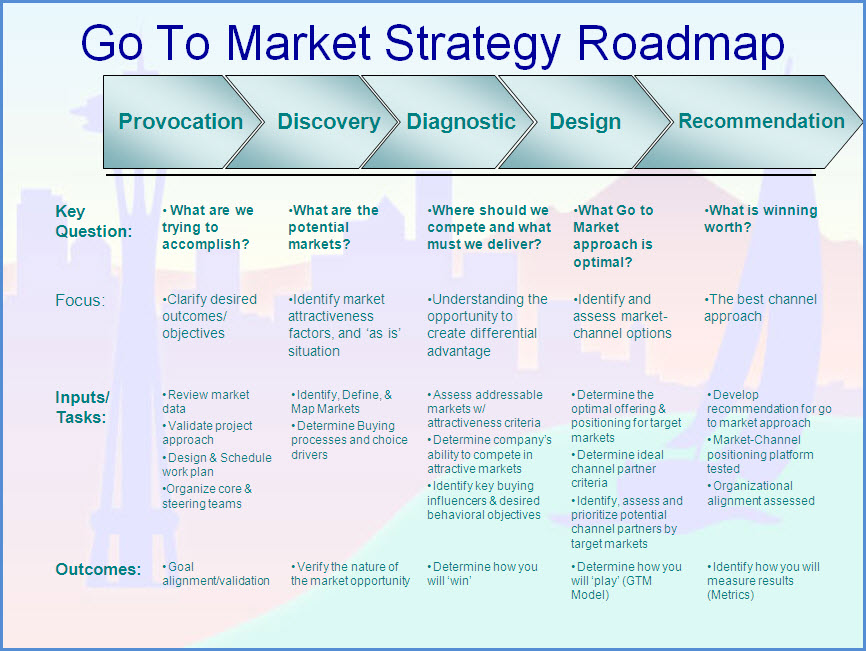 Organizations have many functional areas (Sales, Marketing, Development, Finance, etc.) and moving parts (people). The development and execution of the go-to-market strategy gives the organization focus and direction by providing a framework for decision-making. Specifically, when opportunities and obstacles present themselves, the go-to-market strategy should be the viewing lens. . If the strategy is well thought out, the optimal tactical decisions should be obvious.
Organizations have many functional areas (Sales, Marketing, Development, Finance, etc.) and moving parts (people). The development and execution of the go-to-market strategy gives the organization focus and direction by providing a framework for decision-making. Specifically, when opportunities and obstacles present themselves, the go-to-market strategy should be the viewing lens. . If the strategy is well thought out, the optimal tactical decisions should be obvious.
A Plan
Knowing where one is (Point A) and where one wants to be (Point B) is the first step in developing a go-to-market plan. Simply put, a plan is needed because the shortest distance between two points is a straight line. Building a go-to-market plan based on the strategy will increase the probability of an organization maintaining the course (the straight line), enabling an efficient and effective use of resources.
Scarce Resources
Every organization has a scarce or limited set of resources—usually people and money. Due to this constraint, it is imperative to allocate those resources in the most optimal combination to yield the greatest financial return. Leveraging automation through process and systems is paramount. In addition, it is critical to align tasks with the most appropriate resource (expertise level and pay grade, for example).
Too Many Companies
In addition to looking inward and reviewing internal resources, it's important to look outside an organization's walls. While doing so increases the level of complexity in executing a go-to-market strategy, it's critical to examine the competition since many organizations will be targeting the same customers. This issue is twofold:
1) Customers are confused by generic and undifferentiated messaging
2) There is competition for a finite amount of budget dollars
A well-defined strategy will help an organization breakthrough the clutter and secure a share of the customer's wallet.
Support the Brand
Another benefit of a well-defined go-to-market strategy is that it supports and builds the brand. A laser focus and consistent messaging will help an organization cut through the noise and reinforce the unique selling proposition. In practical terms, ensuring that every outbound and inbound message aligns with the go-to-market strategy will pay dividends to the building and reinforcement of the brand.
Here are some ideas of what to include in a go-to-market strategy checklist:
- Establish the market opportunity: total, served and target
- Solve a specific business problem in a differentiated manner
- Identify the point of entry into the target market to establish the initial market penetration
- Document the customer's buying process
- Understand the business issues for the key personas in the customer's buying process and develop a value proposition that resonates with these individuals
- Establish a differentiated position from substitutes, alternatives and doing nothing
- Prepare a product road for at least eight quarters into the future
- Document the distribution strategy and sales process
- Create an integrated demand creation plan to generate qualified leads
- Develop a lead management plan to convert qualified leads to qualified sales opportunities
- Prepare an onboarding plan to ensure the customer realizes the value in the solution
- Train the support organization to set the customer up for success
- Identify partners to complete the offering and provide the ultimate customer experience
A well-thought out and properly executed go-to-market strategy will reap substantial rewards for an organization: capture of share-of-wallet, efficient use of resources, an enhanced brand and optimized decision-making.







